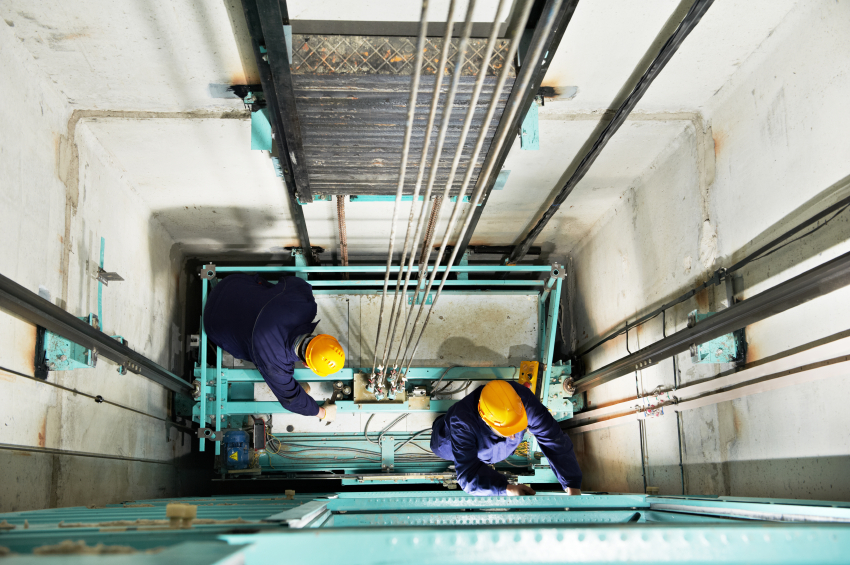The Science of Lifts
Contents |
[edit] How do Lifts Work?
A lift uses physical mechanisms that work together to lift or lower a car to various floors. The key components of a lift system include one or more car, a counterweight, an electric motor, metal cables, and various security systems.
Each part plays a particularly important part in the role of a lift system, and there are a lot of physical principles that are considered to ensure the lift stays functional and as safe as possible.
[edit] Conservation of Energy
This principle is one of the most widely known physical laws that is used. The law states that the total energy of a system that doesn’t interact with its surroundings remains constant. It is also referred to in the following statement:
“Energy is neither created nor destroyed; it transforms from one form to another.”
This would be, for example, converting electrical energy to kinetic energy within a motor. This law is particularly important in lift design, as it helps with the understanding of the raising and lowering of a lift car. Lift cars possess gravitational potential energy (GPE), which is the energy that an object possesses depending on how far the object is from Earth.
A lift that is high up has a greater GPE than if it was lower. Gaining this GPE must come from somewhere, and it comes from mechanical or electrical energy from the motor. To lift a car, more force needs to be applied than the car’s mass times by Earth’s acceleration due to gravity.
For example, lifting a 1,000kg car would require approximately 10,000N to lift using a single pulley, which is an immense amount of force.
[edit] The Physics of Counterweights
Counterweights provide a way to make life a lot easier when lifting a car to higher floors. Traditionally, counterweights weigh the same as when a lift is at half capacity. For example, if a car weighed 1,000kg and has a capacity of 1,000kg, the counterweight would weigh 1,500kg.
Because of this extra weight, it means that less force and, therefore, energy is needed to lift the car. For example, if the lift car is 3,000kg and the counterweight is 2,000kg, then 1,000kg is needed to be lifted as opposed to 3,000kg – an energy reduction of 66.7%.
Because of how they are implemented, it also means that the counterweight increases the acceleration that is required to raise the lift and decreases the acceleration that is required to lower the car, all of which helps to lower the amount of energy that is required by the motor.
As well as this, counterweights help to reduce the amount of energy that is used by the motor, which is beneficial in terms of increasing the environmental friendliness of lift systems. The goal is to ensure that the least amount of energy is used, whilst also maintaining the most efficient service possible.
[edit] Related articles on Designing Buildings
- A brief history of lifts over the years.
- Building engineering physics.
- Considerations When Installing a Residential Lift.
- Home lifts.
- Lifting platform.
- Lift motor room.
- Lift Standards: EN 81-20 and EN 81-50.
- Lifts and Escalators: A Quality Perspective.
- Lifts and Their Special Operating Modes.
- Lifts for buildings.
- Lifts for office buildings.
- Pulley.
- Smart elevators.
- The hidden mechanics of lift routing.
- The importance of service lifts.
- The world's fastest lifts.
--Nathan Massey 14:38, 11 Jul 2017 (BST)
Featured articles and news
One of the most impressive Victorian architects. Book review.
RTPI leader to become new CIOB Chief Executive Officer
Dr Victoria Hills MRTPI, FICE to take over after Caroline Gumble’s departure.
Social and affordable housing, a long term plan for delivery
The “Delivering a Decade of Renewal for Social and Affordable Housing” strategy sets out future path.
A change to adoptive architecture
Effects of global weather warming on architectural detailing, material choice and human interaction.
The proposed publicly owned and backed subsidiary of Homes England, to facilitate new homes.
How big is the problem and what can we do to mitigate the effects?
Overheating guidance and tools for building designers
A number of cool guides to help with the heat.
The UK's Modern Industrial Strategy: A 10 year plan
Previous consultation criticism, current key elements and general support with some persisting reservations.
Building Safety Regulator reforms
New roles, new staff and a new fast track service pave the way for a single construction regulator.
Architectural Technologist CPDs and Communications
CIAT CPD… and how you can do it!
Cooling centres and cool spaces
Managing extreme heat in cities by directing the public to places for heat stress relief and water sources.
Winter gardens: A brief history and warm variations
Extending the season with glass in different forms and terms.
Restoring Great Yarmouth's Winter Gardens
Transforming one of the least sustainable constructions imaginable.
Construction Skills Mission Board launch sector drive
Newly formed government and industry collaboration set strategy for recruiting an additional 100,000 construction workers a year.
New Architects Code comes into effect in September 2025
ARB Architects Code of Conduct and Practice available with ongoing consultation regarding guidance.
Welsh Skills Body (Medr) launches ambitious plan
The new skills body brings together funding and regulation of tertiary education and research for the devolved nation.
Paul Gandy FCIOB announced as next CIOB President
Former Tilbury Douglas CEO takes helm.

























Comments
It did not help me at all shouldn't have wasted my time on ya.
Sorry to hear, have you checked out the related articles section.